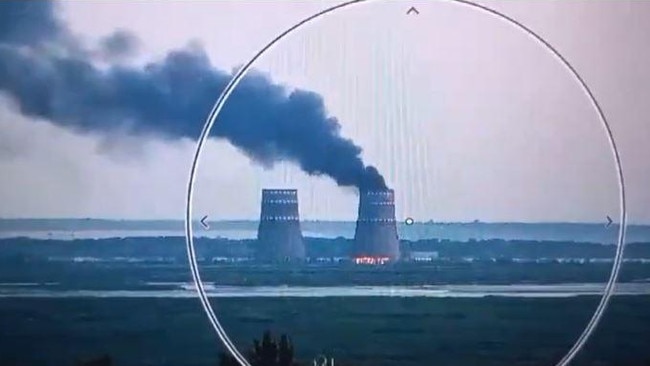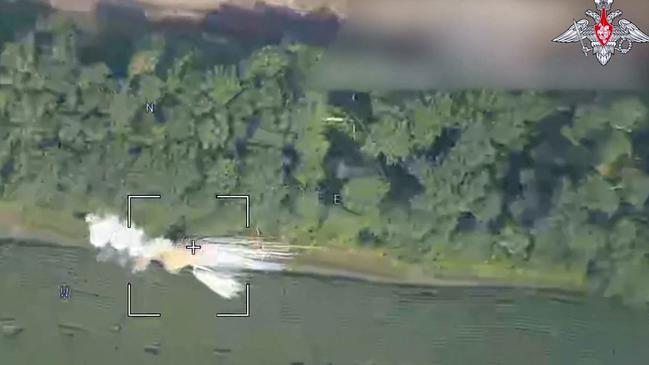
Ukraine has already transformed the rules of sea warfare after destroying one third of the Russian fleet and forcing the remainder to hide in remote ports.
At the core, the Ukrainians are developing the use of artificial intelligence to create communication jamming systems that will prevent Russian drone and missile warfare.
In a strange way it takes us back to World War two when Hedy Lamarr, the famous actress, co-invented systems that played havoc with German communication. The Ukraine land war in Russian territory will almost certainly be decided on drone technology.
Ukraine’s drones were the key weapons in rewriting naval engagement rules.
The world, hopefully including Australia, now realises that the centuries-old era of sea power via conventional sea surface naval ships may be over and Australia’s high cost frigates may be being built for an era that has passed.
Historian, Professor Brian Glyn Williams of the University of Massachusetts describes Ukraine’s “naval” victory this way.
“When Moscow’s invasion began, Ukraine’s only warship was a Soviet-era frigate that had to be scuttled... to prevent it from falling into Russian hands. Unchallenged on the seas, the Russian navy rained down ballistic missiles on Ukrainian cities, provided protection for military aircraft, blockaded Ukrainian ports and was preparing to launch an amphibious attack on Ukraine’s largest port, Odessa,” he said.
“But, deploying a series of new tactics and weapons in what became known as the battle of the Black Sea , the Ukrainians have been able to destroy 26 Russian vessels since the start of the war and forced Russia’s powerful Black Sea Fleet to flee hundreds of miles to safer harbours. This historic success offers a lesson in how weaker powers can take advantage of innovative thinking and new technology to defeat more powerful opponents.”

Ukraine can now again export its grain via the Black Sea and it is able to inflict great damage on Russian occupied Crimea which is a major supply route for the Russian front in Ukraine.
In the Ukraine land war, Russia and Ukraine are engaged in a World War One style killing field. Russia has lost at least 550,000 men - mostly young conscripts from areas outside the politically sensitive cities of St Petersburg in Moscow. The rural young people who were offered large sums to fight. Ukraine’s losses are nowhere near as severe but a war fought on those rules will inevitably lead to a Ukraine defeat.
US military hardware will help, but Ukraine is fighting the technology war “Nasdaq style”.
It has more than 100 small start-up style companies developing technology often aimed at winning the drone war partly by jamming the Russian communication technology that controls their drones.
Russia is in the same race but its research is centralised in government organisations.
The land invasion of Russia is partly designed in part to force Putin to take the pressure off the killing fields by transferring troops to defend the homeland.
What looks likely to take place is a drone war where the technology of the small Ukrainian enterprises will be pitted against the Russian might. In the Russian invasion, Ukraine has already used drones to down two large Russian helicopters which is a good sign.
Last February, Ukraine announced that it was developing drones that could travel more than 500km. Ukraine forces are now less than 500km from Moscow but, unless they can jam Russian communications using artificial intelligence and other means, having the distance capacity to hit the Kremlin will not be effective if the Russians can shoot down the Ukrainian drones.
Almost certainly to defeat any Russian counter attack Ukrainian drones will be backed by F16 aircraft and together they must be able to destroy the Russian forces that will be thrown against them. It will be a deadly testing ground for the new technology.
Ukrainian president Volodymyr Zelensky has already shown a conciliatory tone by saying that longer term Ukraine does not want to control Russian territory but he believes the invasion will help with any peace talks over Ukrainian soil.
But unless he wins the technology war his invasion into Russia will have a similar outcome to the two infamous and ill-fated Russian invasions – Hitler and Napoleon.
The view in Europe is that if Ukraine looks like losing vast areas, Poland will step in with its powerful army enhanced by Ukrainian technology.
But irrespective of the Ukraine/Russia war outcome, fast forward a year or two and the days of the land wars seen in the last century are ending. Armies will need to be very different.
In the Middle East Hamas neutralised Israel’s technology advantage by a tunnel network which has been incredibly costly in human lives to dismantle.
But future Middle East wars will follow Ukraine and be a battle of the technologies of Israel and its allies against Iran and its allies.
Australian defence officials are not good at looking at future threats facing the nation. We order our equipment by looking backwards rather than forward. Hopefully the lessons of Ukraine will not be lost on Australia.






The tactics that Ukraine appears to be attempting in its invasion into Russia will rewrite the rules of future land wars. The Middle Eastern war is heading in the same direction.